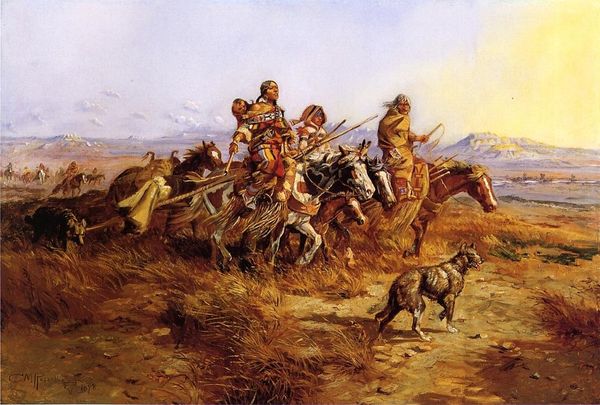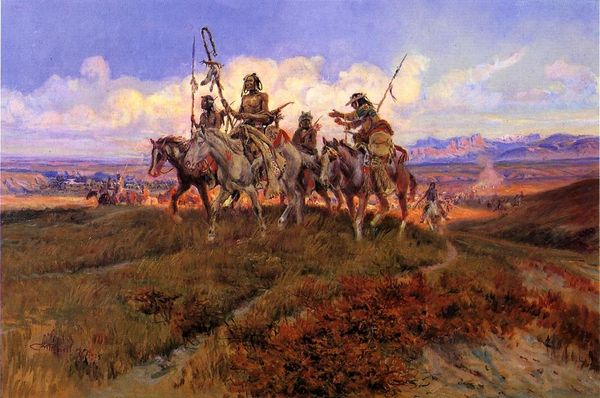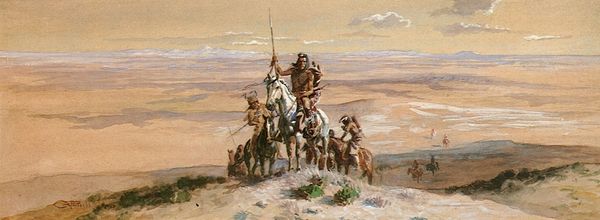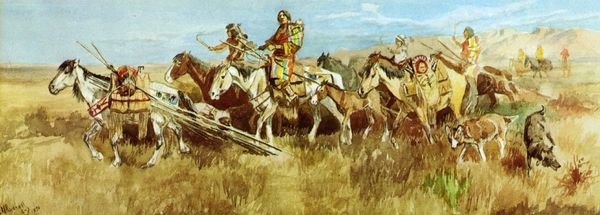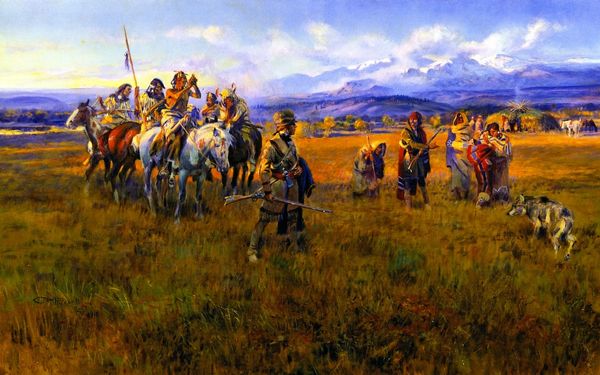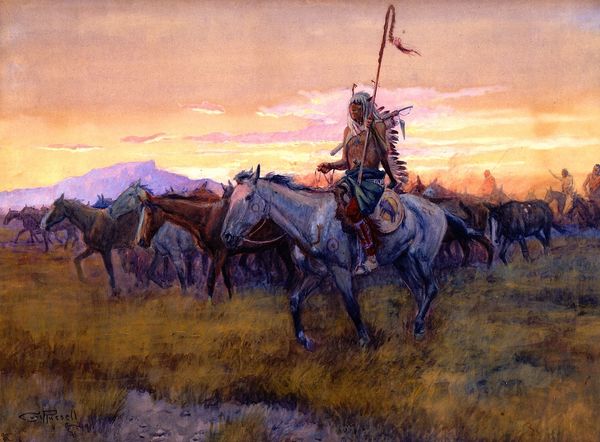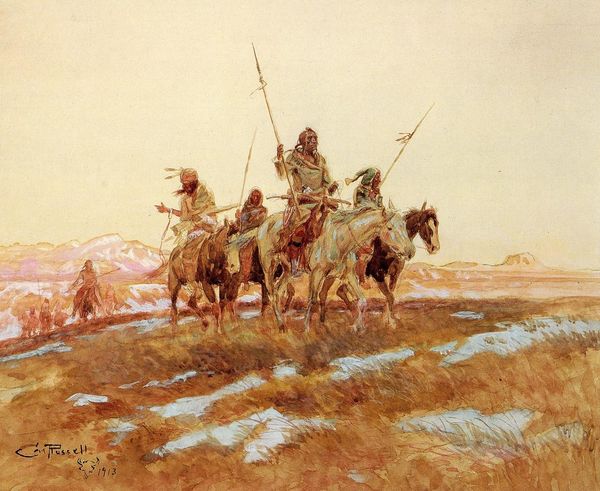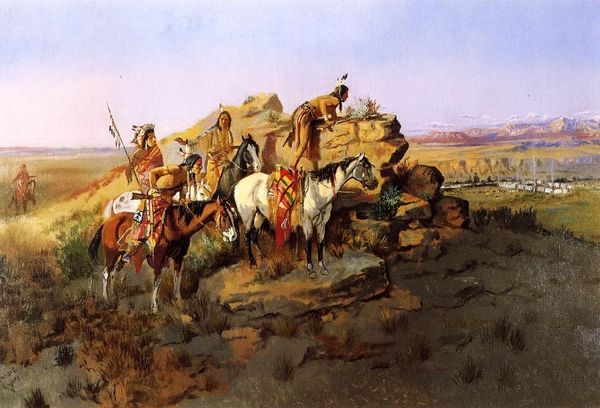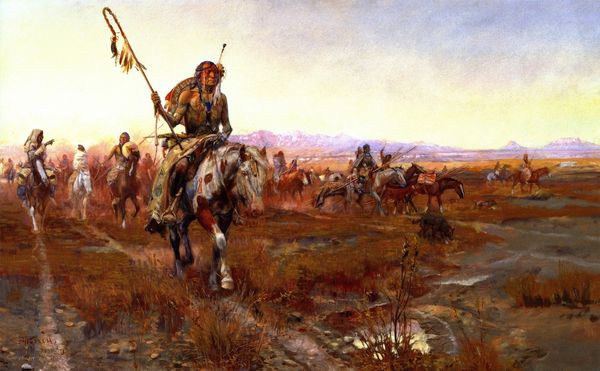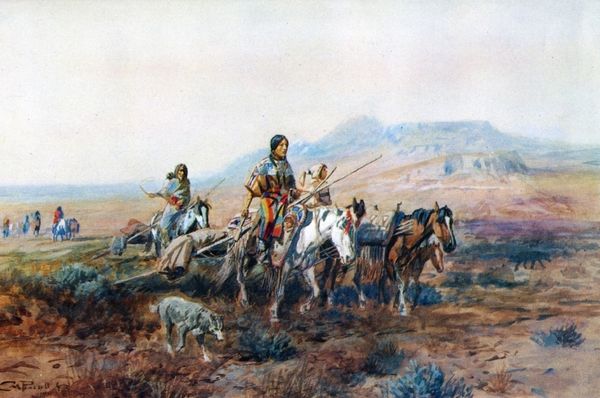
oil-paint
#
narrative-art
#
oil-paint
#
landscape
#
oil painting
#
watercolour illustration
#
watercolor
Copyright: Public domain
Charles M. Russell made Watching for the Smoke Signal with watercolor and gouache in 1907. The color palette, dominated by earthy yellows and browns, feels very process-oriented – like the painting emerged from the land itself. The overall effect is one of immediacy, of being right there on the dusty hillside with these figures, looking out at the horizon. I am interested in the way that Russell's brushwork emphasizes the texture of the landscape. Notice how the strokes of paint create the impression of rough grasses and rocky soil. The figures are rendered with looser brushstrokes, giving them a sense of movement and vitality. Look how the red handprints on the horse seem to be vibrating on the canvas, like the animal is alive. Russell's paintings remind me a bit of Frederic Remington, another artist who was fascinated by the American West. Like Remington, Russell captured the drama and excitement of frontier life, but he also brought a deeper level of empathy and understanding to his portrayal of Native Americans. Ultimately, the painting remains wonderfully ambiguous, inviting us to project our own ideas and feelings onto its open-ended narrative.
Comments
No comments
Be the first to comment and join the conversation on the ultimate creative platform.

